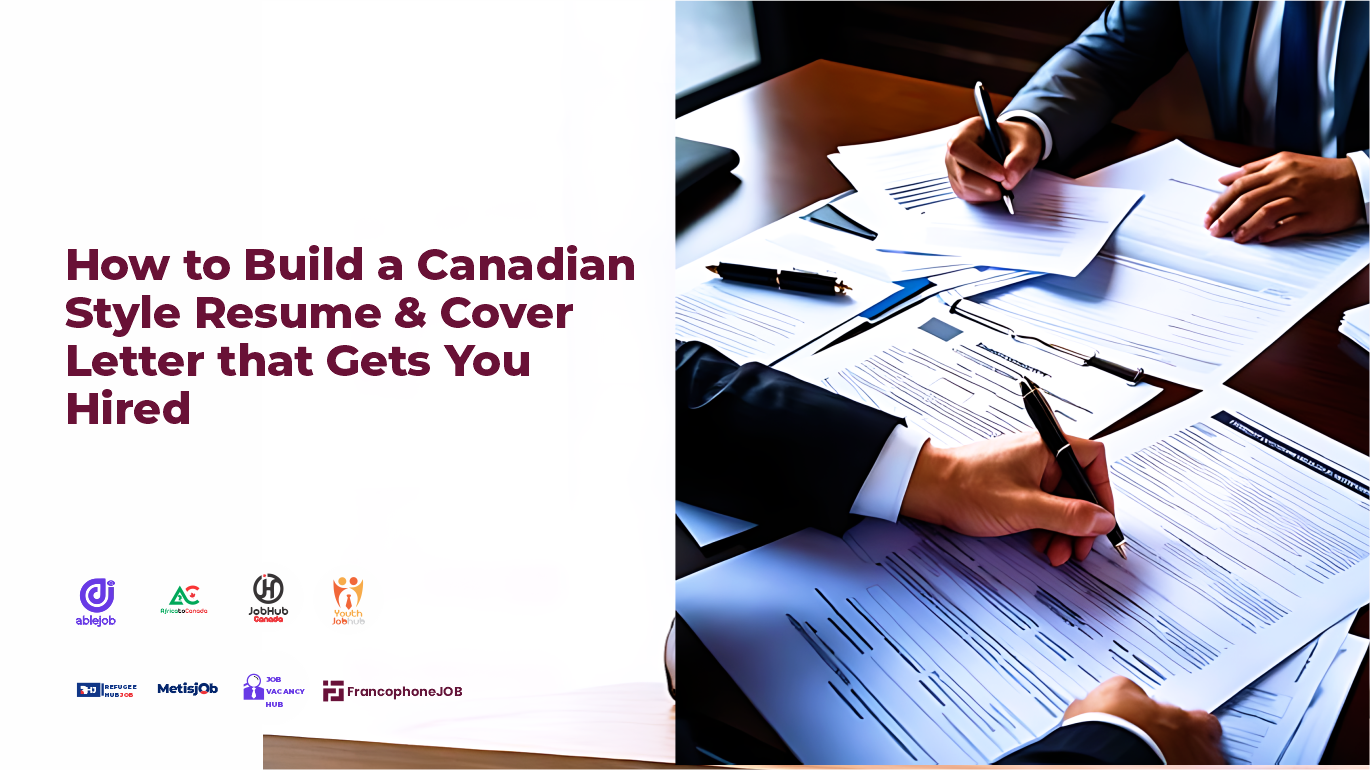October 01, 2025

When applying for jobs in Canada, your resume and cover letter must follow certain conventions and expectations. Even if you have strong experience, a mismatched format or missing details can hold you back. In this guide, we will walk you through how to craft a Canadian style resume and cover letter that make a positive impression and increase your chances of landing interviews.
Canadian recruiters often look for clarity, relevance, and concise presentation. Avoid long prose and use bullet points.
Emphasize measurable achievements such as “increased sales by 20 percent” or “reduced costs by ten thousand dollars” rather than vague responsibilities.
Use Canadian English spelling such as “organize,” “centre,” and “licence or licensed” depending on the region.
Keep your resume ideally to one or two pages unless you are very senior.
A typical Canadian resume includes:
Contact Information: Name, phone number with area code, email, city and province. Optional LinkedIn URL.
Professional Summary or Objective (optional): Two to three lines summarizing your core skills and what you bring.
Core Skills or Key Competencies: List five to eight relevant skills tailored to the job posting.
Work Experience (reverse chronological):
Job title, employer name, location city and province, dates month and year.
Under each, bullet points describing your achievements, responsibilities, and measurable results.
Education or Certifications: Name of institution, degree or certificate, and years.
Additional Sections (optional): Professional memberships, relevant volunteer work, technical skills, language skills, awards.
Avoid listing irrelevant early jobs or personal details such as age, marital status, religion, or photos unless the job specifically demands it.
Read the job posting carefully and mirror some of the keywords used in it such as skills, tools, or qualifications.
Put your most relevant experience first. If some past work is not relevant, reduce detail or omit it.
Customize your summary or objective to match the employer’s needs.
Your cover letter is your chance to explain why you are an ideal fit. Here is how to structure it:
Opening paragraph: Introduce yourself, mention the job you are applying for, and how you discovered it.
Middle paragraphs one or two: Highlight your key accomplishments, linking them to the employer’s needs. Use examples.
Closing paragraph: Reiterate your interest, thank them, and express eagerness to discuss further.
Use a professional tone but allow some personality. Keep it to one page.
Do not simply restate your resume. Instead, use the cover letter to weave a narrative and show motivation specifically for this employer.
Use a clean, professional font such as Calibri, Arial, or Times New Roman in size ten to twelve points.
Keep formatting consistent with the same font for headings, same bullet style, and aligned margins.
Save and send in PDF format unless the employer asks otherwise to preserve layout.
Check for errors in spelling, grammar, and punctuation. Use proofreading tools or ask someone to review.
Use action verbs such as “led,” “implemented,” “achieved,” or “designed” to make statements more dynamic.
Do not include “References available upon request” as it is understood.
Avoid jargon or internal abbreviations not understood outside your past companies.
Be truthful and concrete. Do not exaggerate or lie.
Do not leave large gaps in your timeline. If you have gaps, briefly explain them with volunteer work or courses.
Keep updating and refining your resume as your skills evolve.
At FrancophoneJob, we provide tools, resources, and guidance to help candidates create outstanding applications that meet Canadian standards. By following these steps, you can present yourself professionally and boost your chances of landing your desired role in Canada.




